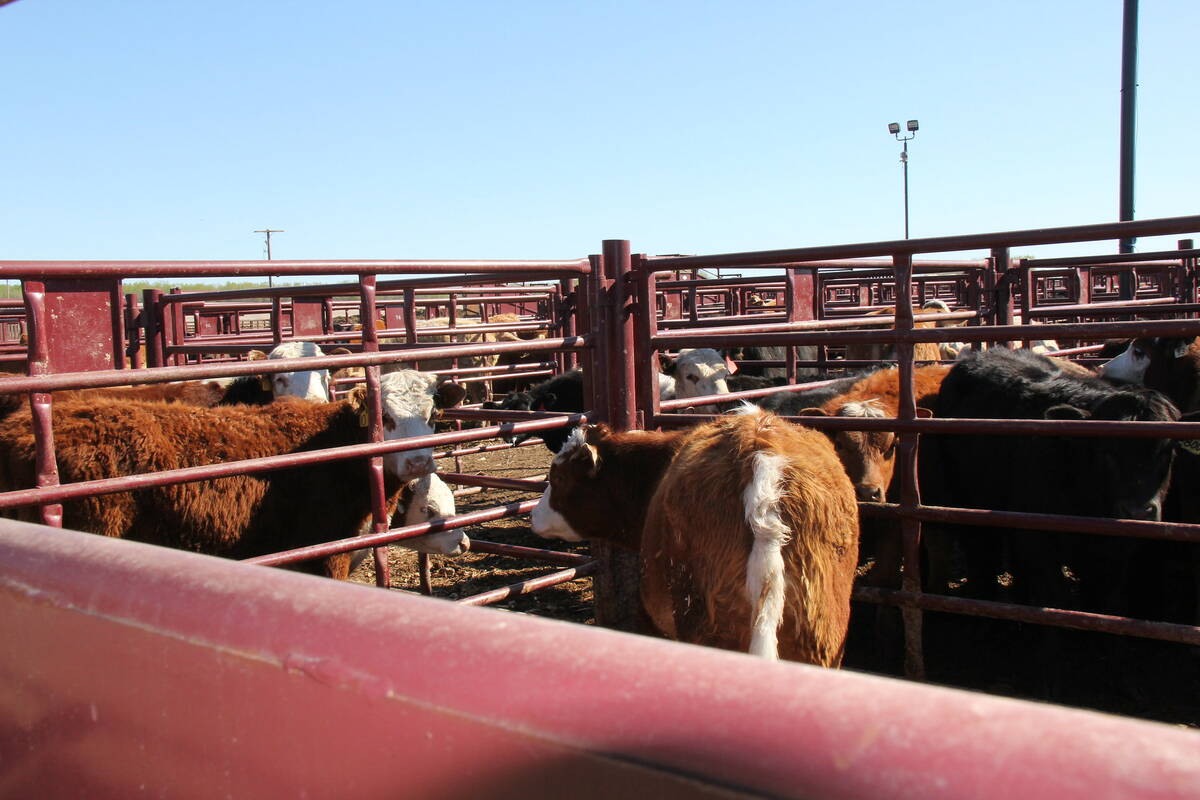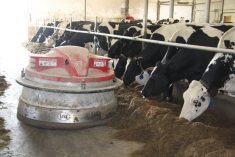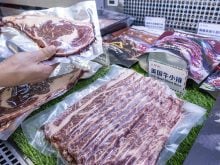EDMONTON – Dr. Christiaan Gerber is a cattle breeder in a hurry.
The South African medical doctor doesn’t have a lifetime to breed the perfect Red Angus animal. He wants to use modern technology to improve the cattle breed.
“I’m a latecomer in the industry. I don’t have time to waste,” said Gerber as he stood at Farmfair beside his Red Angus bull calf that was born from an embryo transplant.
Since Jan. 2 ,when the bull was born, it was a “standout calf,” he said.
Read Also

Livestock movement scanner looks for proving ground
The Canadian Cattle Identification Agency (CCIA) will test new technology intended to simplify the recording of animal movements, linked to proposed federal livestock traceability regulations.
Gerber had been in the barnyard checking on another newborn calf buried in the straw when out of the corner of his eye he saw a cow and a blur heading into the bush.
“It was already dry and spunky. I knew I had something else here,” said Gerber, who now lives in Vermilion, Alta.
The bull calf placed reserve in its class at Farmfair, but a steady stream of visitors stopped by the stall to admire its rare pedigree. Gerber has memorized breed books, looking for the holes and missing links in the Red Angus breed. As a small cattle breeder with a full-time job as a rural doctor, Gerber wants to focus his energy on filling the niche markets in Red Angus cattle to include high quality carcass traits and tenderness.
“I could see a gap in the red industry. Everything that’s possible has been done in the black industry.”
Gerber caught his love of farming from spending the December school holidays at his uncle’s farm in South Africa.
After spending 10 years as a doctor in Saskatchewan, Alberta and British Columbia, he wanted another outlet for his energy. He bought a quarter section north of Vermilion with an old house and yard, threw away the television and the family went to work.
In 2001, he started with 50 commercial cows, but realized he wanted to focus on finding the rare pedigree of the Red Angus. This year he will calve 42 cows, 25 that are purebred.
“Every hour I’m off, I’m out there doing something.”
He’s rebuilt corrals, learned to artificially inseminate, studied herd management manuals and spent hours learning animal behaviour.
“If I knew how much it was going to cost to start farming, I never would have started,” said Gerber.
But it is now his passion.
“When it’s a passion, it’s not work any more.”














